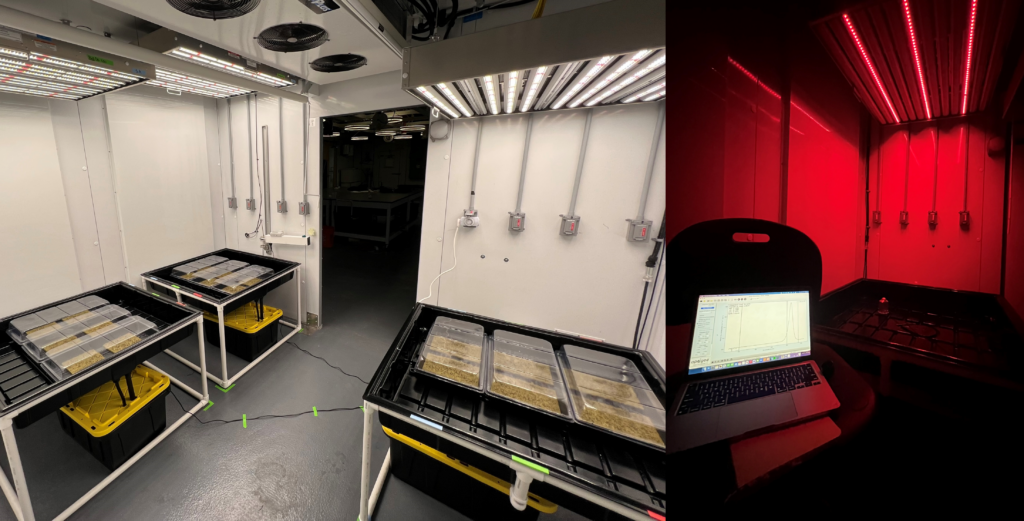By Lyn Dean

The stars seem to have aligned in 2018 when Josh Craver, assistant professor at Colorado State University (CSU), was offered a position in Controlled Environment Horticulture (CEH) in the Department of Horticulture and Landscape Architecture. Just a few months earlier, he received his Ph.D. at Purdue University in West Lafayette, Indiana where his research focused on controlled environmental agriculture (CEA) – specifically light-emitting diode (LED) lighting systems.
“When this position opened at CSU, it seemed perfect for me,” reflects Craver. “I was very excited and grateful to be selected to join the faculty.” This was a new faculty position – as opposed to a position being filled – which speaks to the department’s commitment to CEH and, more broadly, CEA.
CEH gains momentum
Craver is excited about all things related to environment optimization in greenhouses or vertical farming, including inputs such as lighting, temperature, fertilization, and CO2.
“We need to continually improve production efficiency for the industry, especially with the high cost of many inputs, such as electricity for lighting,” Craver says. In the area of lighting – Craver’s main focus – LEDs provide innumerable options for light manipulation such as changing the color and intensity during the day. Though CSU had limited walk-in growth chambers to support CEA research when he arrived, he has since worked to expand facilities to support this research on the CSU main campus as well as the new CSU Spur campus in Denver. Of note, four new walk-in growth chambers have been installed in the CEA Lab in the Terra building at the CSU Spur campus and are used by Craver and collaborators for CEA research.
“My hope is that our research in growth chambers will inform, and eventually impact, production practices in greenhouse and indoor environments,” he says.

Student interest is growing
During Craver’s first two years at CSU, he updated the horticulture curriculum by creating new courses and redesigning existing ones. By the Fall 2020 semester, after developing, “testing the water” and tweaking this new course, Craver launched Indoor Crop Production and Physiology, a 400-level course which has been well received by students. He also teaches hands-on floriculture and hydroponics practicums as well as greenhouse management. The greenhouse management course in particular experiences high enrollment as “it is open to students outside the horticulture major if they have taken Shannon Mason’s HORT 100 class. Shannon’s ability to draw students into horticulture has been very helpful.”
“The CEH concentration for horticulture majors is currently one of the largest in the department,” Craver notes. “This is exciting as it means there are a growing number of students interested in learning about controlled environments for crop production.”
Overlapping responsibilities Though 45% of Craver’s role is teaching, with 35% research and the balance outreach, he says they all feed into and support each other. “I look forward to future research to help inform the increasing interest in CEA.”











